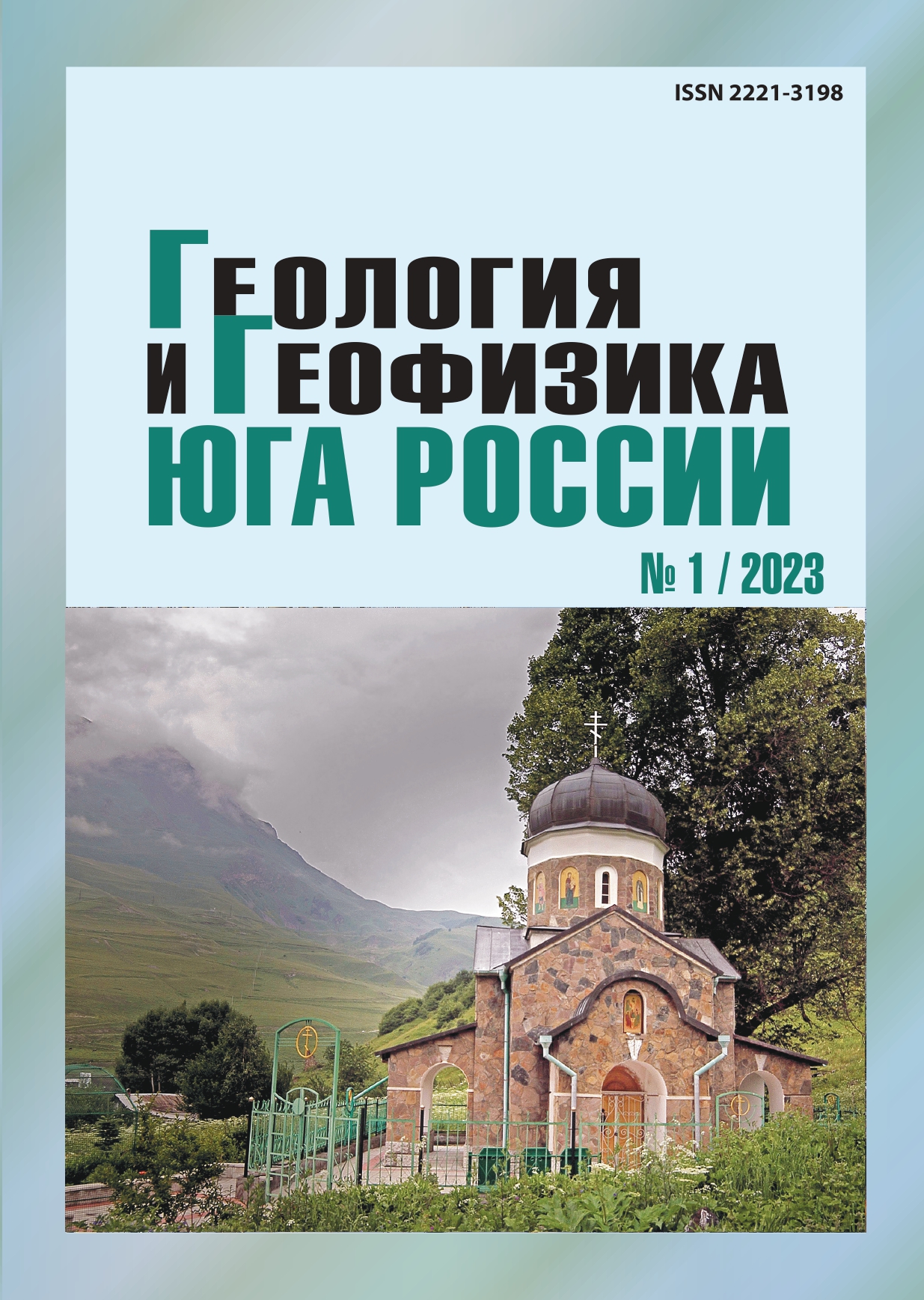Early-Middle Devonian volcanic rocks from areas of massive sulfide deposits of the Front Range of the Greater Caucasus: geodynamic typification and minerageny
Abstract
Relevance. In the southern part of the Scythian plate, in the structural-formational zone (SFZ) of the Peredovoi Ridge (PR) of the Greater Caucasus (GC), Early-Middle Devonian volcanic formations are known, with which pyrite deposits of the Urupsky region are associated, as well as deposits of Besskesskoe, Bykovskoe, Dautskoe, Khudesskoe and numerous ore manifestationes. Petrological and geochemical studies of Devonian volcanics are necessary to clarify the features of the geodynamic development of the GC region during this period. The aim of the study is to decipher the geodynamic position of the Early and Middle Devonian volcanic rocks of the PR GC and to clarify their mineragenic specialization. Methods. The object of research is the effusive rocks of the Dautskaya and Kyzylkolskaya suites, which are common in the zone of the PR GC, within the Kyzylkolsky tectonic cover, in the interfluve of the Bolshaya Laba, Marukha, Kuban, and Malka rivers. Results. It has been established that the volcanogenic rocks of the Kyzylkol suite – basalts, andesites, dacites, rhyolites – are calc-alkaline formations. Volcanites of the Dautskaya suite (basalts, andesite-basalts, rhyolites) are rocks of the tholeiitic series. It is shown that among the mafic volcanics there are two varieties of Na and K-Na basalts. The first (SiO2=52.1%, Na2O=4.5%, K2O=0.1%) are moderately aluminous with Na type alkalinity (Na2O/K2O=6.6-17.7) close to N-MORB type basalts, Lan/Ybn=0.6-1.3. The second (SiO2=48.9%, Na2O=3.2%, K2O=1.7%) – high alumina with K-Na type of alkalinity (Na2O/K2O=1.6–3.8) close to E-MORB, Lan basalts/Ybn=4.2-17.7. On the diagrams, figurative points of the studied rocks are grouped in fields from island-arc tholeiites to basalts of mid-ocean ridges and back-arc spreading zones. According to geochemical criteria, they are comparable with the rocks of young and developed OA. It is assumed that the observed differences in basalts are associated with different degrees of melting of the original “spinel” peridotites and different degrees of contamination with the subduction component. Acid volcanites (rhyolites, dacites) are high-alumina formations with K-Na and Na alkalinity types (Na2O/K2O=1.5–121). In terms of petrochemical parameters, rhyolites are close to tholeiitic granites and M-type granites. Their close association with basalts indicates that they are differentiates of basic tholeiitic melts. It is noted that the Devonian pyrite deposits of PR contain industrial mineralization of Cu, Zn, Au, Ag, platinoids and other metals. According to structural and genetic features, two main types are distinguished here – “Urupsky” (Сu-Zn) and “Khudessky” (Cu-Co). It has been established that in the Early – Middle Devonian on the northern margin of the Paleo-Tethys in the GC zone, an island-arc process, complicated by intra-arc rifting, took place.


